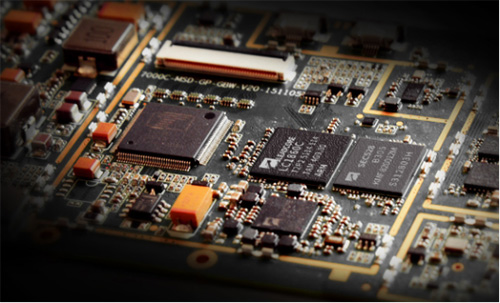- English
- Español
- Português
- русский
- Français
- 日本語
- Deutsch
- tiếng Việt
- Italiano
- Nederlands
- ภาษาไทย
- Polski
- 한국어
- Svenska
- magyar
- Malay
- বাংলা ভাষার
- Dansk
- Suomi
- हिन्दी
- Pilipino
- Türkçe
- Gaeilge
- العربية
- Indonesia
- Norsk
- تمل
- český
- ελληνικά
- український
- Javanese
- فارسی
- தமிழ்
- తెలుగు
- नेपाली
- Burmese
- български
- ລາວ
- Latine
- Қазақша
- Euskal
- Azərbaycan
- Slovenský jazyk
- Македонски
- Lietuvos
- Eesti Keel
- Română
- Slovenski
- मराठी
- Srpski језик
Understanding the PCBA Manufacturing Process: Helping You Make Smart Choices
2024-02-07
Understanding the PCBA manufacturing process can help you better understand the process and make informed choices when selecting a supplier or overseeing a project. The following are the key steps that typically cover the PCBA manufacturing process:

1. PCB manufacturing:
First of all, manufacturing PCBA requires manufacturing PCB, which is a printed circuit board. This includes selecting appropriate PCB materials, designing the circuit, fabricating the board, chemically etching or machining the circuit pattern, and performing multi-layer stacking (if required).
2. Component procurement:
Once the PCB is ready, electronic components need to be purchased, including resistors, capacitors, transistors, integrated circuits, etc. This may involve selecting suppliers, negotiating prices and sourcing cost-effectiveness.
3. Component assembly:
After the components are procured, these components need to be soldered accurately on the PCB. This can be achieved through hand soldering, surface mount technology (SMT), Through Hole Technology components (THT), etc.
4. Dispensing and packaging:
If necessary, components on the PCB may need to be glued to ensure their stability. The PCB is then typically placed into a housing or package to provide mechanical and environmental protection.
5. Reflow soldering:
If SMT technology is used, the components on the PCB need to be fused to the PCB through reflow soldering. This is done by heating the solder paste and then cooling it to solidify.
6. Functional test:
After the PCBA is completed, functional testing is usually required to ensure that all components are working correctly. This includes circuit testing, functional testing, connectivity testing, etc.
7. Appearance inspection:
Perform a visual inspection to ensure that the PCBA has no welding defects, damage or contamination.
8. Packaging and marking:
Finally, PCBA is typically packaged into the final product and marked for identification during shipping and storage.
9. Delivery:
The final PCBA product can be delivered to the customer or integrated into a larger installation.
When selecting a PCBA supplier or overseeing a PCBA project, you can better understand the supplier's capabilities, quality control measures, and project progress by understanding these manufacturing process steps. Additionally, understanding the process can help identify potential quality issues and improvement opportunities to ensure the success of your PCBA project.
-
Delivery Service






-
Payment Options









